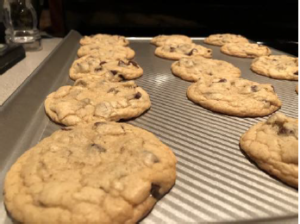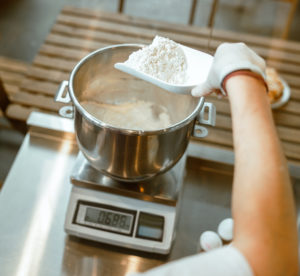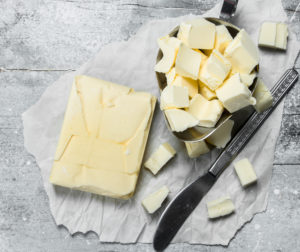2022 INNOVATION ENGINEERING :: DAY 8
3 Ways I use IE to Make Better Cookies
(Recipes Included)
Written by Brad Hall
Before I start, if you’re just looking for the recipes you can find them here. If you give them a try this holiday season I’d love to know how they turn out. I’m also always looking for new recipes, so if you have a killer recipe please share! You can use the Certified Practitioners group on LinkedIn to share your experiences.
Now, on to how I use IE for baking.
1.Using Meaningfully Unique to Find New Recipes
The first step, when wanting to try a new cookie is always finding a recipe to try. The problem is, there’s hundreds if not thousands of recipes for every cookie and unless you’ve had the recipe before there’s no way to know how good it is. So how do I decide what recipe to try? By applying IE and looking for the Meaningfully Unique recipes. When you look over a bunch of different recipes you’ll find trends in what ingredients they use and how they’re made. So when you come across a unique recipe they stand out, and while they might not all be good, they’ll all be unique. If you look through the included recipes you’ll notice this. Chocolate chip cookies that include maple syrup, maple cookies that use apple butter and a combination of browned and softened butter, and a snickerdoodle recipe that uses browned butter, yogurt, and is stuffed with caramel. Every time I’m looking for a new recipe I’m looking for something that stands out as unique. Are they using ingredients that no one else is or are they making the cookies in a different way?
try. The problem is, there’s hundreds if not thousands of recipes for every cookie and unless you’ve had the recipe before there’s no way to know how good it is. So how do I decide what recipe to try? By applying IE and looking for the Meaningfully Unique recipes. When you look over a bunch of different recipes you’ll find trends in what ingredients they use and how they’re made. So when you come across a unique recipe they stand out, and while they might not all be good, they’ll all be unique. If you look through the included recipes you’ll notice this. Chocolate chip cookies that include maple syrup, maple cookies that use apple butter and a combination of browned and softened butter, and a snickerdoodle recipe that uses browned butter, yogurt, and is stuffed with caramel. Every time I’m looking for a new recipe I’m looking for something that stands out as unique. Are they using ingredients that no one else is or are they making the cookies in a different way?
2. Reducing Variation to Increase Consistency
If you don’t know, the U.S. primarily uses volume to measure ingredients and almost all recipes you find will be in teaspoons, tablespoons, and cup measurements. While this can be nice, it also leads to significant variation in how the recipe is made. To address this, I ran tests to convert the volumes I use to weights in order to insure every time I make a recipe it will turn out the same. What did I find? In a single set of measuring cups, made by the same manufacturer, the weight (normalized to 1 cup) could vary by upwards of 5% and the weights I was getting was over 10% higher than what was listed on the packaging! Account for the fact that all my measurements were done within a few minutes using the exact same method, and it quickly becomes apparent that the amount of variation between batches or between people is enormous. So, I converted all my cup measurements to weight and these days the only significant variation I see is based on how long I bake them for. It’s worked so well that I’m planning to run tests with my teaspoon and tablespoon measurements over the holidays to convert those as well.
how the recipe is made. To address this, I ran tests to convert the volumes I use to weights in order to insure every time I make a recipe it will turn out the same. What did I find? In a single set of measuring cups, made by the same manufacturer, the weight (normalized to 1 cup) could vary by upwards of 5% and the weights I was getting was over 10% higher than what was listed on the packaging! Account for the fact that all my measurements were done within a few minutes using the exact same method, and it quickly becomes apparent that the amount of variation between batches or between people is enormous. So, I converted all my cup measurements to weight and these days the only significant variation I see is based on how long I bake them for. It’s worked so well that I’m planning to run tests with my teaspoon and tablespoon measurements over the holidays to convert those as well.
3. Using PDSA to Learn More
To end it off, two ways I’ve used PDSA with cookies. The first, is by using friends and co-workers as willing? guinea pigs. If a recipe ever has “optional” additions the best way to find out if you should include them is to poll people. I’ll set out cookies and a tally sheet for people to try each version and record which they like best. This is how I decided to include caramel in the snickerdoodle recipe, and how I’m deciding what chocolate chips to include in a pumpkin cookie recipe I’m currently experimenting with. Second, is to try fail fast, fail cheap experiments with recipes and use study to determine how to proceed. I’ve done multiple butter tests with my chocolate chip cookie recipe, from expensive butter, to cheap butter, to browned butter in order to find the perfect match for the recipe. After each trial I stop and study the results to better understand why I got the outcomes I did. My next trial with this will be using browned butter, but with adding water to account for the loss of liquid in the browning process.
snickerdoodle recipe, and how I’m deciding what chocolate chips to include in a pumpkin cookie recipe I’m currently experimenting with. Second, is to try fail fast, fail cheap experiments with recipes and use study to determine how to proceed. I’ve done multiple butter tests with my chocolate chip cookie recipe, from expensive butter, to cheap butter, to browned butter in order to find the perfect match for the recipe. After each trial I stop and study the results to better understand why I got the outcomes I did. My next trial with this will be using browned butter, but with adding water to account for the loss of liquid in the browning process.
As you try new things these holidays don’t forget about IE and how it can help you come to better results!
Happy Holidays, and Happy Baking!